Winter may be cold, dark and bleak, but it’s peak season for some of the plate’s most powerful produce, aka superfoods! We know: A “superfood” isn’t expressly defined, and advertisers often use that term as a way of making a food sound better than it really is. But, the way we look at it, true superfoods often share similarities. They often don’t come with labels, like those in packages or boxes. True superfoods come naturally packaged from the earth.
Thankfully, winter brings a few standout superfoods, and while they may not be labeled as “super” on the shelf, they certainly boast a rich, nutrient-dense profile that extends beyond just the belly-filling benefits.
1. POMEGRANATES
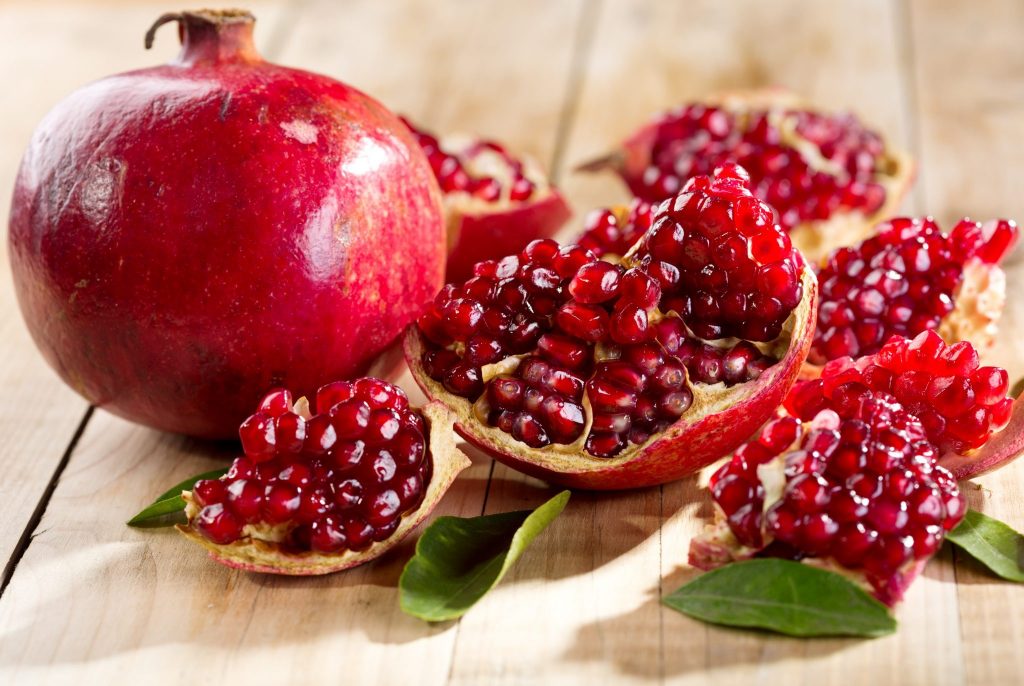
Filled with hundreds of tiny red seeds called arils, the pomegranate is one of winter’s most delicious wonders. It’s also an excellent source of fiber, giving you 7 grams per 1 cup serving. Bonus points: Eating pomegranates may even help lower cholesterol by preventing plaque buildup in the arteries. The vibrant seeds are filled with cancer-fighting polyphenols with a greater antioxidant potential than red wine and green tea. They’ll add a bright pop of flavor to salads, yogurt, smoothies and even lean proteins like chicken or fish.
Buying tip: Think plump, heavy and round. Go for weight versus size because heavier fruits contain more juice. Prepackaged seeds are also available; be sure to enjoy them quickly as these tend to spoil within a few days.
Storage tip: Once deseeded, store in water. They’ll keep refrigerated for up to one week or frozen for up to 3 months. The seeds will stain, so be sure to wear an apron while deseeding!
Dietitian’s tip: You can enjoy pomegranate in both seed or juice form. We suggest going with seed form so you can get the fiber-boosting potential. If you’re going with juice, beware of added sugar and buy 100% juice varieties where possible. Find juices stored in dark containers because these help keep the vitamin C in pomegranate from degrading from light exposure.
2. SWISS CHARD
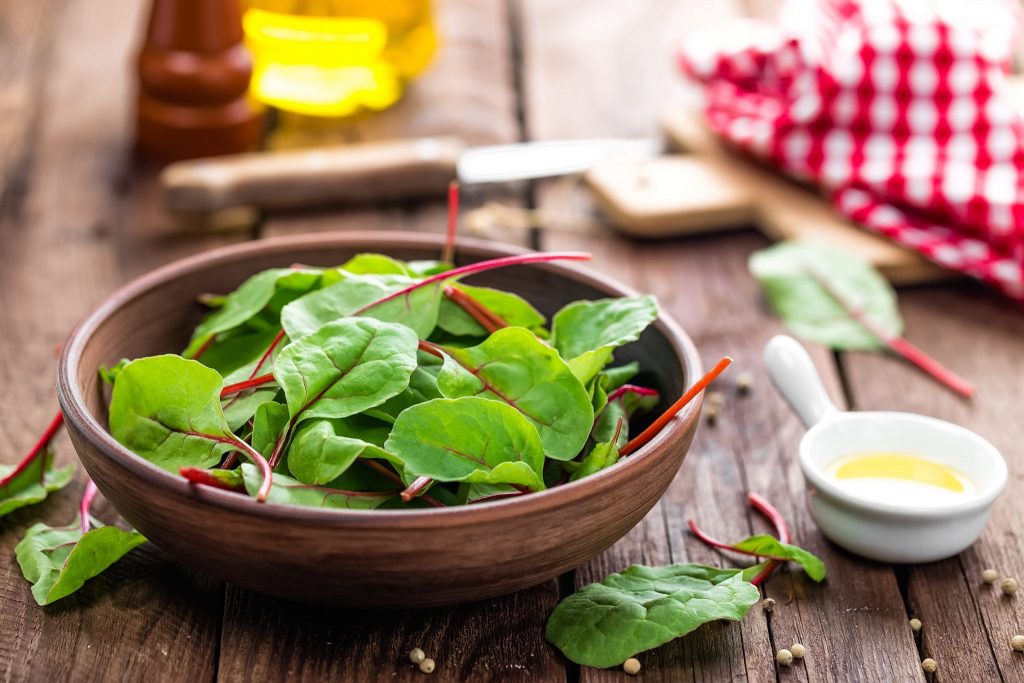
Think of this delicate, tender green as a lesser-known kale alternative. Swiss chard can be wilted into soups, pastas and casseroles as well as tossed into a fresh salad. Like most dark leafy greens, it is very nutritious, boasting a hefty 560 micrograms of vitamin K (700% of the daily value) and over 200 times the daily recommendation for vitamin A, plus the added benefits of iron, folate, vitamin C and potassium. At only 35 calories and 4 grams of fiber per cup of cooked greens, there’s no reason not to enjoy this vegetable.
Storage and buying tips: For the freshest bunch, choose chard with a firm, crisp stalk and crinkly, tender greens — avoid those with spots or holes. Store unwashed in a plastic bag in the vegetable drawer of your refrigerator for up to three days. Got old chard? Use in soups and stews, or make a sharp, pleasantly bitter pesto.
Dietitian’s tip: Don’t toss the thick stems and stalks! Instead, use them like celery. Thinly sliced stalks can add crunch to tuna or chicken salad. Use the large leaves as a lower-carbohydrate, lower-calorie swap for tortilla or bread.
3. TURMERIC

This vibrant yellow spice lends a distinctly peppery, earthy flavor to curry powders. With its long history of medicinal use, turmeric contains a component called curcumin that is currently being studied for its anti-inflammatory and cancer-fighting antioxidant properties. Like its ginger root cousin, turmeric may also help treat heartburn or an upset stomach. Residents of India have lower rates of Alzheimer’s, a statistic that is often associated with the country’s higher usage of turmeric in cooking.
Storage and buying tips: Look for pieces that are firm with few blemishes. You can keep the root stored (unpeeled) in the refrigerator for up to 2 weeks. Much like other spices, the powdered form will keep on the shelf for several years.
Dietitian’s tip: You can grate fresh turmeric over scrambled eggs or roasted root vegetables, stir it into brown rice or simmer it with milk and honey for a cozy bedtime tea. The vibrant, golden hue is also a great way to replace artificial chemical coloring in icings for cakes and cookies. Look for it in the produce section of the supermarket in root form or on the spice aisle in powdered form.
4. CABBAGE
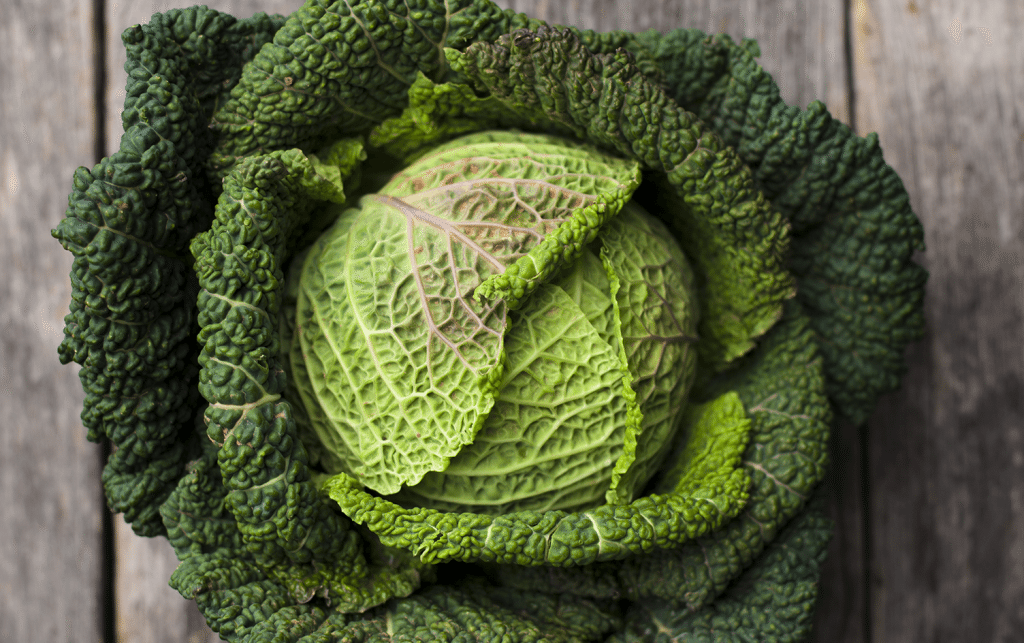
This extremely affordable and easy to find vegetable provides 33 calories and 3 grams of filling fiber per cup. Just one cup of shredded cabbage has over 40% of your daily needs for cold-fighting vitamin C. As a member of the brassica family, cabbage contains detoxifying sulfur compounds — the same reason your kitchen may smell while it’s cooking. Red cabbage varieties have high amounts of anthocyanin, an antioxidant known to have strong heart-healthy benefits.
Storage and buying tips: To keep cabbage fresh and crisp, store the head in whole form in the crisper drawer of the refrigerator. Wrap in plastic or store in a plastic bag to limit exposure to air, which will soften the leaves. Remove outer leaves before using. Avoid storing cabbage with apples and other fruits, which release ethylene gas and will cause the cabbage to spoil more quickly.
Dietitian’s tip: Cabbage can easily be chopped into slaws, salads, tacos, soups and sandwiches. Raw cabbage leaves also make deliciously crisp lower-carbohydrate wraps. You can also try cabbage in its fermented form, such as either sauerkraut or kimchi. Shopping note: When buying sauerkraut at the supermarket, be sure to shop in the refrigerated section; the canned versions have been pasteurized, which kills all of the good-for-you probiotics.
5. BEETS
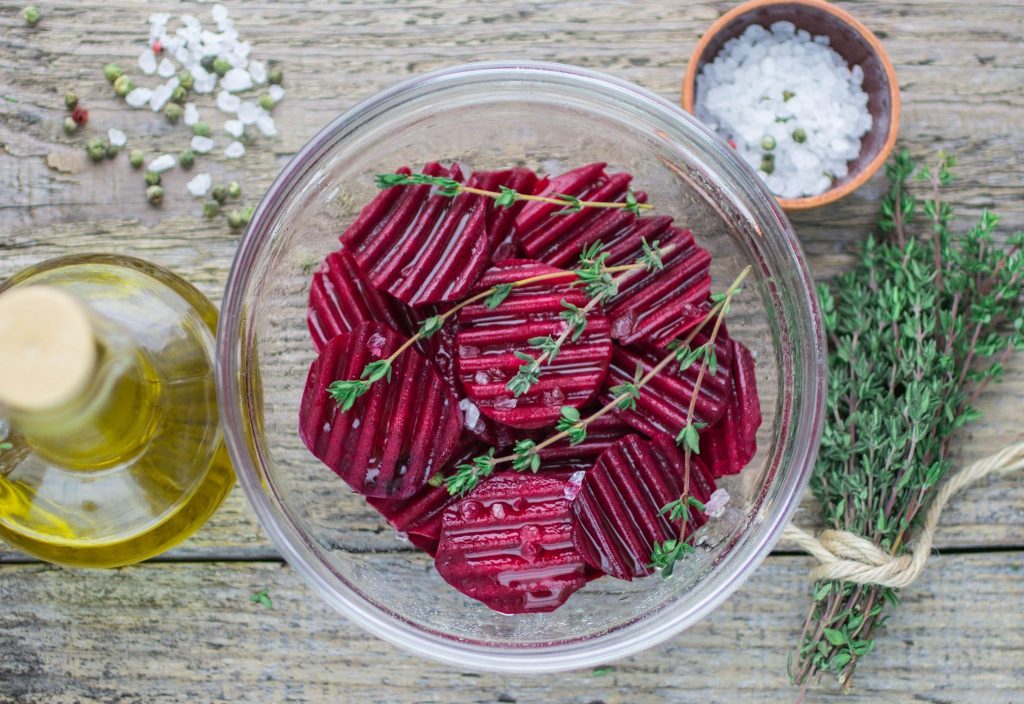
Beets are literally bleeding with a powerful profile of nutrients — boasting a hefty dose of antioxidants and 4 grams of fiber, with only 60 calories per cup. They contain more iron than spinach and are a good source of potassium (1 cup has as much as a banana) and folate. Of particular interest are the heart-healthy and anti-inflammatory properties of beets, which can be attributed to a pigment called betalain — which gives beets their vibrant red hue.
Buying and storage tips: The beet root will keep refrigerated for several weeks — store in a plastic bag in the vegetable drawer. Beet greens have a shorter lifespan; use these up within a few days. As long as the greens are attached to the beet, they will continue to draw moisture from the root. Be sure to remove these and store them separately in the refrigerator, leaving about an inch of the stems attached to the root.
Dietitian’s tip: You can roast beets for a sweet, buttery side. If you don’t have an hour on hand to roast this luscious root, raw beets make a bright, crisp addition to slaws and salads. A word of wisdom: Don’t toss those greens! Beet greens have one of the richest nutrient profiles of the dark leafy family — packed with folate, vitamin K, calcium and iron. The greens are slightly bitter, so try chopping them up and sautéing in a bit of olive oil, salt and pepper to eat as is, or toss into whole grains or roasted root vegetables.
6. PARSNIPS
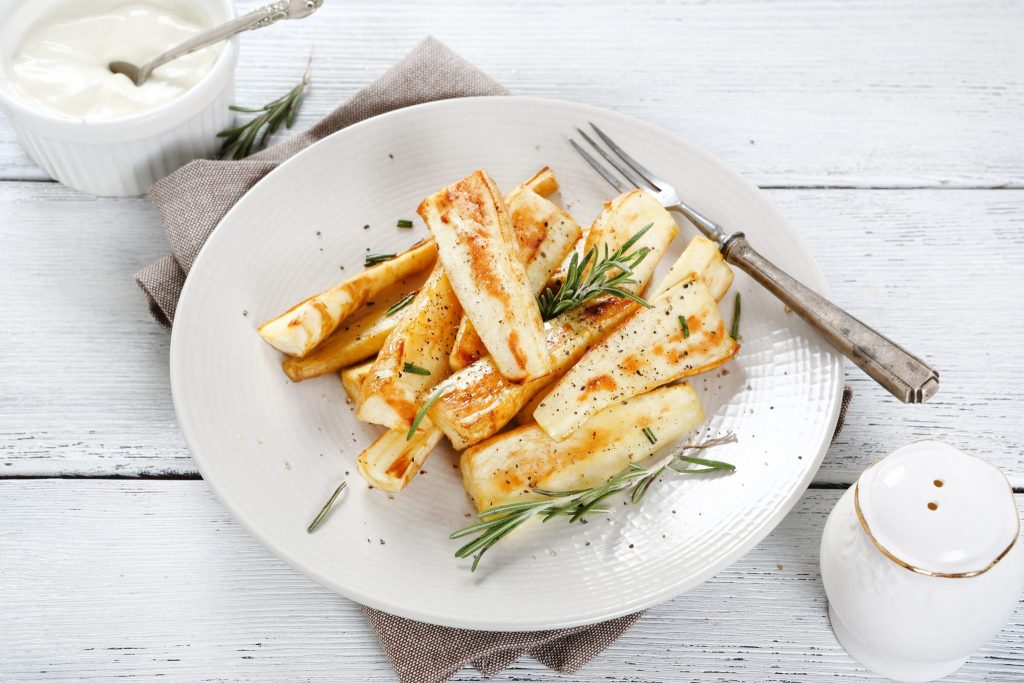
Unlike their carrot cousins, parsnips have twice the fiber and a unique sweet and nutty flavor. In fact, before sugar became widely available, parsnips were used to help sweeten savory dishes. Parsnips have nearly as much potassium as a banana and a hefty dose of nutrients, including vitamin C, folate, and manganese — which plays an essential role in blood sugar regulation and brain function.
Storage and Buying Tips: Avoid buying the extra-large parsnips, which can have a tough, woody core. Smaller varieties will be sweeter and much more tender. Store in the refrigerator, unwashed, in a tightly sealed plastic bag for several weeks.
Dietitian’s Tip: The next time you’re craving a bowl of mashed potatoes or French fries try parsnips, which deliver all of the starchy goodness of the potato but have a lower glycemic index, more fiber and fewer calories. Try roasting parsnips for a deep, nutty, caramel-like flavor that goes well with wintry stews.
Try these Parsnip Fries: Cut parsnips into 1/2-inch wide strips about 3 inches long. Toss to coat with a bit of olive oil, salt and pepper. Bake at 450°F for 20–25 minutes or until tender and crisp on the edges, turning once. Toss with a handful of fresh herbs, such as rosemary, dill or minced chives.
7. CITRUS (ORANGES, TANGERINES, GRAPEFRUITS, LEMON, LIMES)
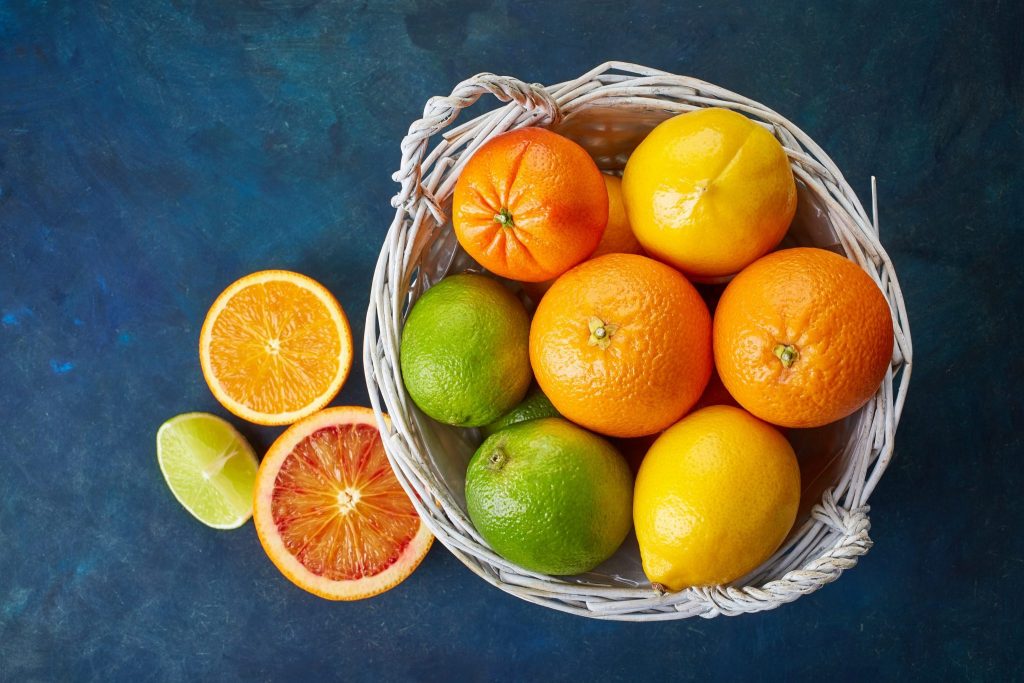
It may seem obvious that citrus is a smart winter choice, but benefits extend far beyond the notable vitamin C boost. Citrus contains a powerful flavonoid called hesperidin, which provides heart-healthy benefits by improving circulation and helping to lower blood pressure.
Buying and storage tips: Pick fruit that feels plump and heavy for its size — a sign of more juice. The peels should feel taut and firm, not shriveled or soft. If you plan to juice your fruit, leave it on the counter, as it’s easier to extract juice from room-temperature fruit. Refrigeration will extend the life of citrus by a few weeks — a great way to store the abundance of oranges and grapefruits you are likely to receive over the holidays. Citrus zest and juice will keep in the freezer for up to 6 months.
Dietitian’s tip: Choose fiber- and water-packed whole fruits over juice, which is a concentrated source of calories and sugar, as often as possible. Oranges and tangerines are great portable snacks. A spritz of lime or lemon over roasted fish or veggies can really make flavor pop without adding salt.
Try this Citrus Dressing: Mix 3 parts oil + 1 part citrus juice (add a sprinkle of coarse salt and freshly ground black pepper) to toss over vibrant salad greens.
8. SWEET POTATOES
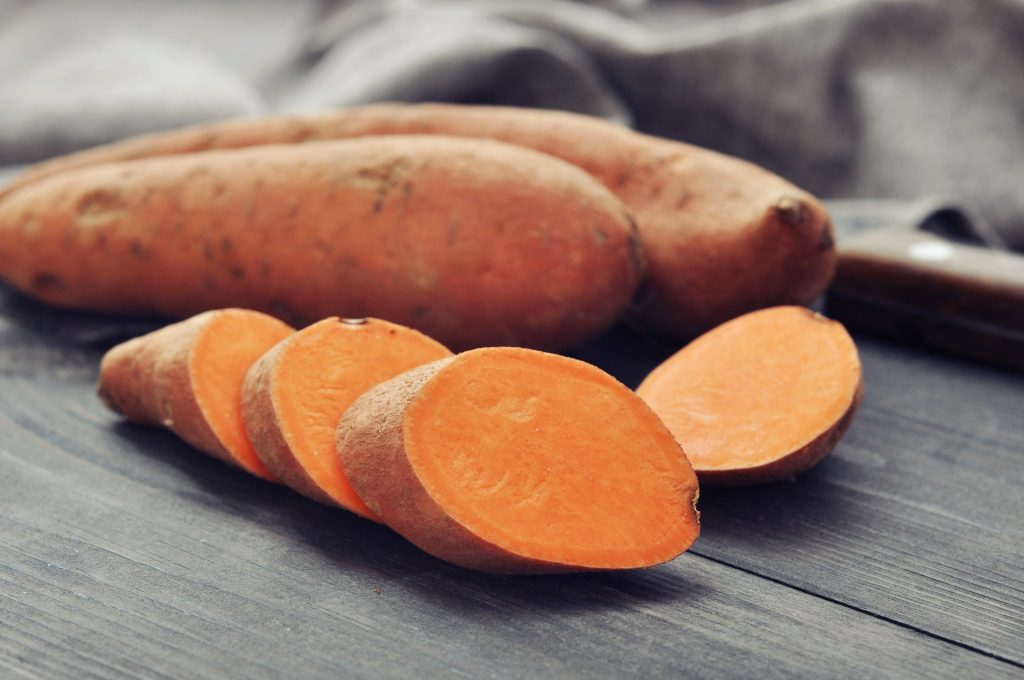
Compared with white potatoes, sweet potatoes contain more fiber and vitamins A and C. A serving of sweet potato provides 400% of your daily vitamin A, an essential vitamin that promotes better eye, tooth and skin health. This vitamin A comes from beta-carotene, which is where sweet potatoes get their unique orange hue.
Buying and Storage tips: Look for those that feel dense for their size, with little to no bruising, soft spots or sprouting. Smaller potatoes will be sweeter and creamier than larger ones. Sweet potatoes should be stored in a cool, dark place but not the refrigerator! The cold fridge will alter the cell structure in sweet potatoes creating resistant starches that are hard to digest.
Dietitian’s tip: You can enjoy sweet potatoes roasted, broiled, baked or sautéed. A word of caution on sweet potato fries: They may have more vitamin A, but they have just as much fat as their white potato counterpart, so enjoy them in moderation. Try sweet potato greens, which boast more vitamin B6, riboflavin and vitamin C than the actual potato, with a nutrient profile similar to that of spinach.




